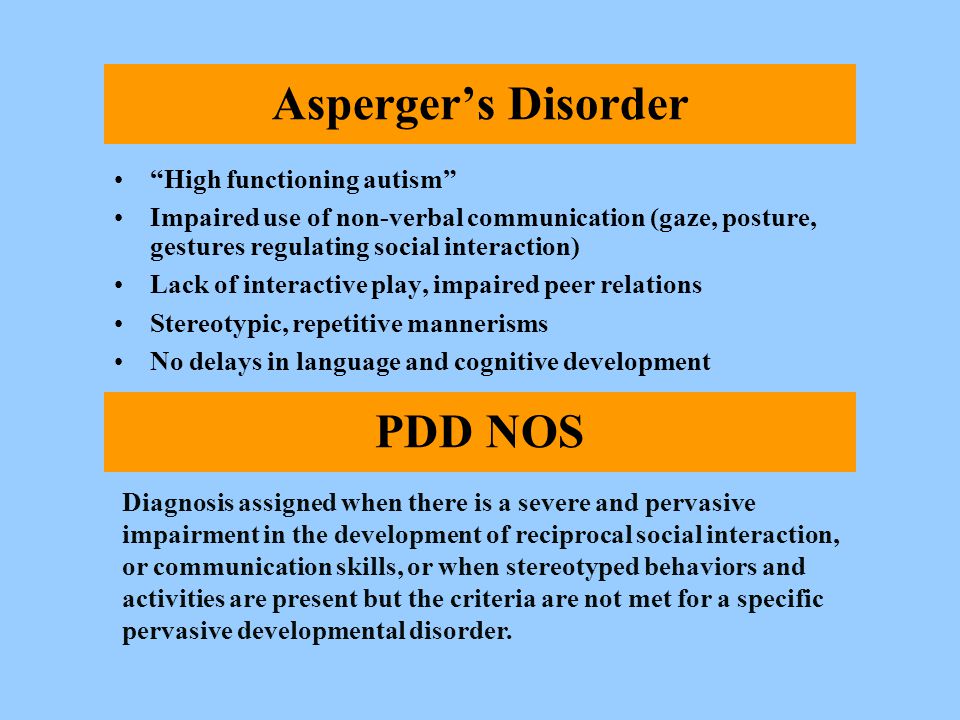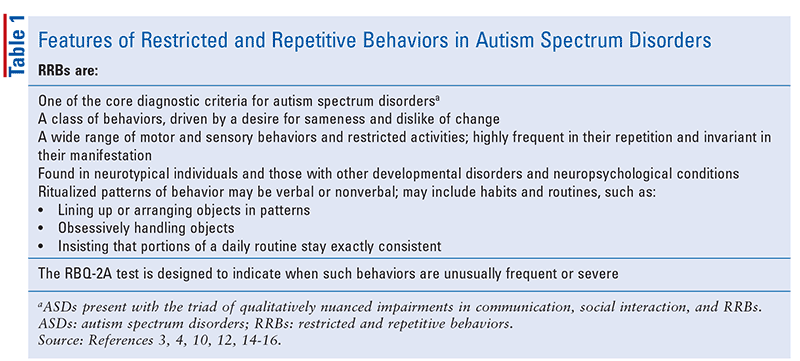
Rocking, hand and arm flapping, unusual hand and finger movements, and attachment to objects rather than pets and people are common. Their actions are repetitive, routine and restricted. Other traits include avoidance of eye contact, an expressionless face and the use of gestures to express needs. They are unresponsive to affection, show no interest in peers or adults and have few interests. These children do not want to be held, rocked, cuddled or played with. It is associated with moderate mental retardation in three out of four cases. Please call our office at (508) 421-4610 if you have any questions about applying for disability with Pervasive Developmental Disorder (PDD-NOS) or the application process in general.Autistic disorder is frequently evident within the first year of life, and must be diagnosed before age three. Domains are broad areas of functioning intended to capture all of what a child can or cannot do. If you do not meet the listing, you may still qualify for disability benefits if you are not performing substantial gainful activity and if the impairment prevents you from doing your past relevant work or other work that exists in significant numbers in the national economy.įor children, to functionally equal the listings, an impairment(s) must be of listing-level severity that is, it must result in “marked” limitations in two domains of functioning or an “extreme” limitation in one domain. Adapt or manage oneself (see 112.00E4).Concentrate, persist, or maintain pace (see 112.00E3).Understand, remember, or apply information (see 112.00E1).Extreme limitation of one, or marked limitation of two, of the following areas of mental functioning (see 112.00F):.

The listing for Autism Spectrum Disorders for children is 112.10:ġ12.10 Autism spectrum disorder (see 112.00B8), for children age 3 to attainment of age 18), satisfied by A and B: Concentrate, persist, or maintain pace (see 12.00E3).Understand, remember, or apply information (see 12.00E1).Extreme limitation of one, or marked limitation of two, of the following areas of mental functioning (see 12.00F):.


You may meet the criteria for disability if you meet the requirements of one of Social Security’s official disability listings.

The criteria for Autistic Disorder are not met because of late age onset atypical and/or sub- threshold symptomotology are present. In the DSM-IV, the essential features of PDD-NOS are severe and pervasive impairment in the development of reciprocal social interaction or verbal and nonverbal communication skills and stereotyped behaviors, interests, and activities. PDD-NOS was one of several autism diagnoses that are now included in the overall diagnosis of autism spectrum disorder (ASD) with the publication of the DSM-V. PDD-NOS stands for Pervasive Developmental Disorder-Not Otherwise Specified (PDD-NOS).


 0 kommentar(er)
0 kommentar(er)
